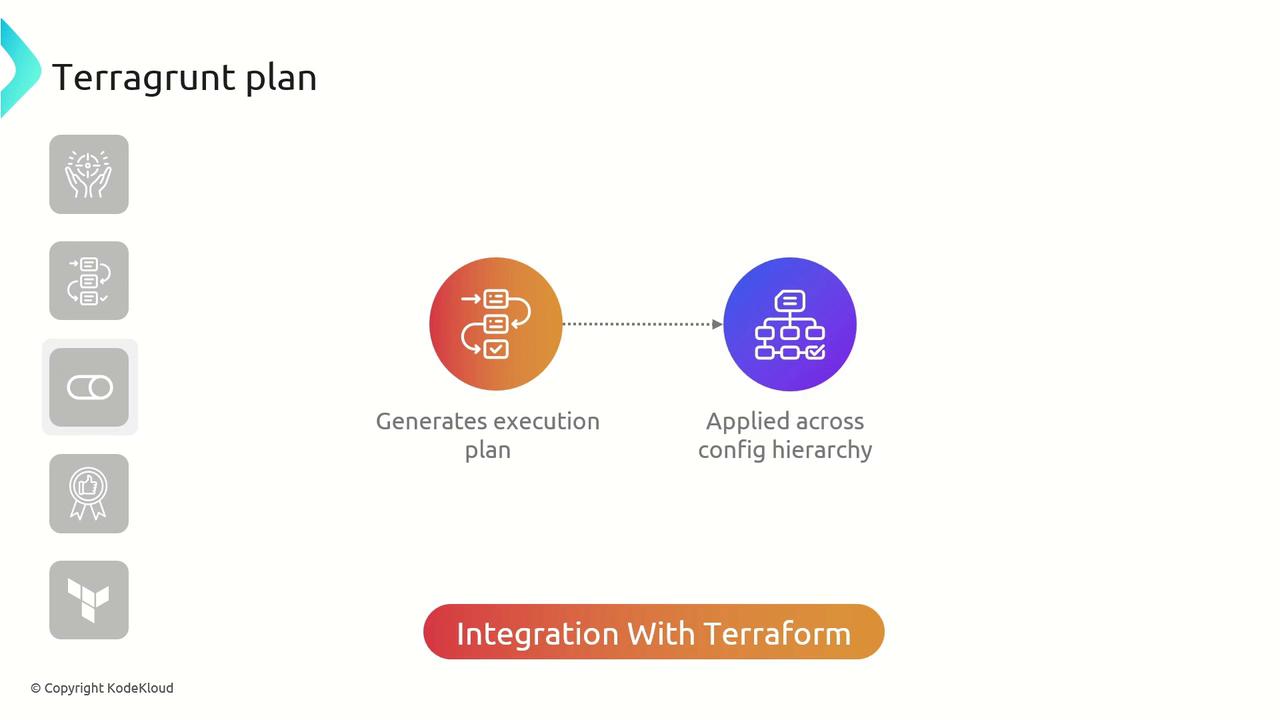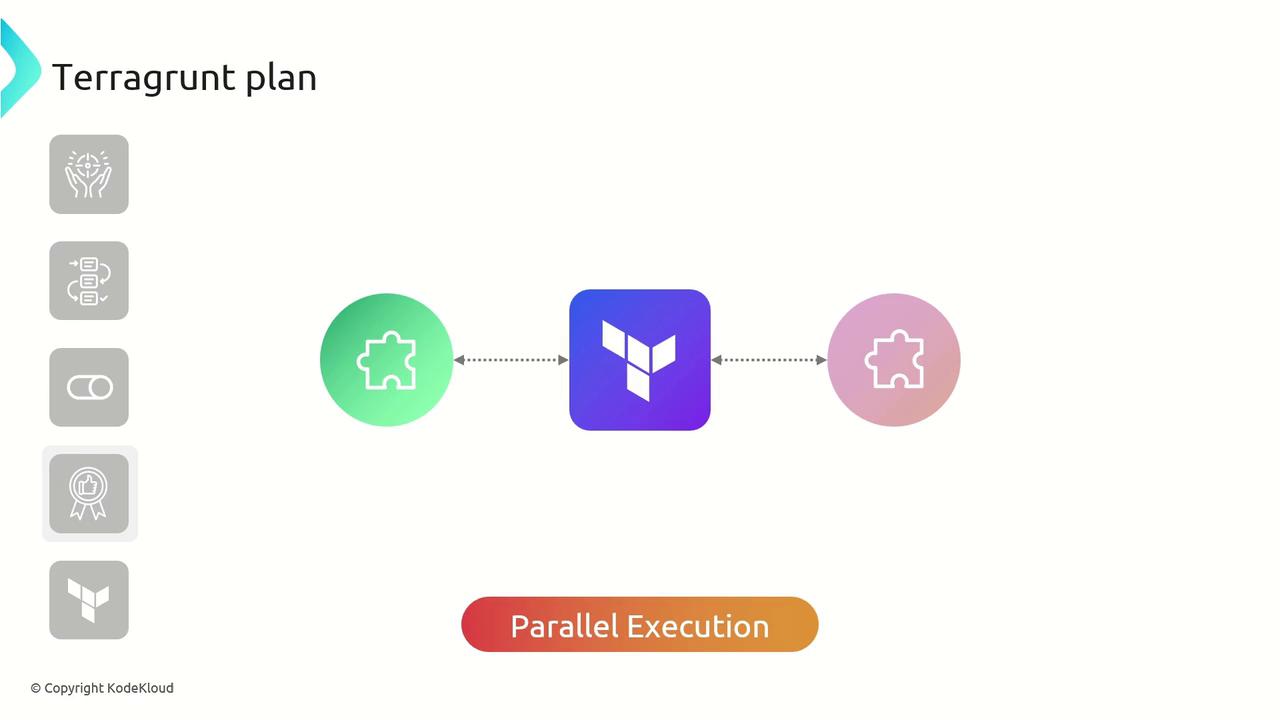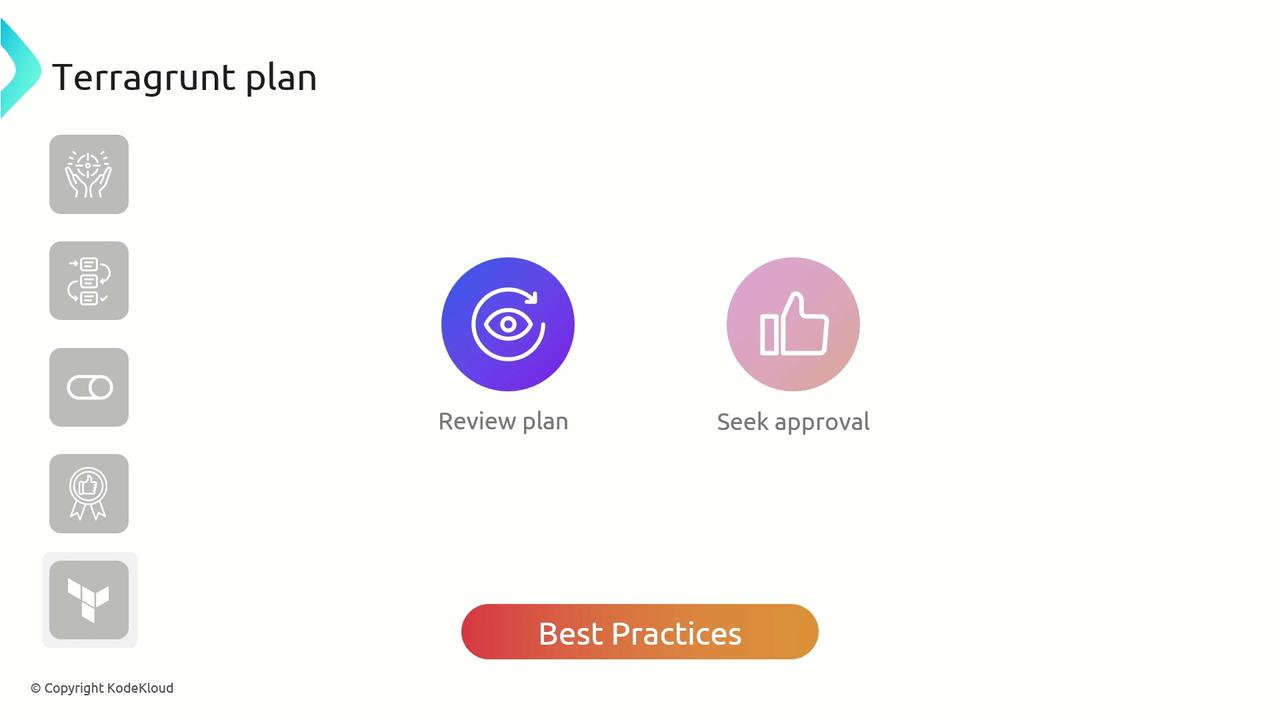Terragrunt for Beginners
Terragrunt Commands
terragrunt plan
terragrunt plan produces a detailed execution plan that shows exactly which resources Terraform will create, update, or destroy. Reviewing this plan before applying changes helps you:
- Validate the intended modifications
- Catch configuration errors early
- Ensure alignment with stakeholder requirements
Terragrunt enhances Terraform’s native plan command by recursively applying it across your entire configuration hierarchy. This provides a unified, end-to-end view of changes across all modules.
Note
Terragrunt delegates to terraform plan under the hood, orchestrating plans across multiple modules and directories.

Key Features of Terragrunt Plan
| Feature | Description | Benefit |
|---|---|---|
| Hierarchical Planning | Executes terraform plan across all Terragrunt modules | Consistent visibility across environments |
| Parallel Execution | Plans multiple modules concurrently | Significant reduction in planning time |
| Execution Summaries | Aggregates and summarizes results from each module | Quick, consolidated view of all pending changes |
Parallel Planning Across Modules
In a modular project structure, terragrunt plan can run in parallel, speeding up the planning phase by generating multiple execution plans simultaneously.

Best Practices for terragrunt plan
- Always review the complete execution plan before applying changes.
- Seek approval from relevant stakeholders to prevent unintended infrastructure modifications.
- Use version control to track and audit plan outputs.

Warning
Never run terragrunt apply without first validating the execution plan. Unreviewed plans can lead to unexpected downtime or resource drift.
Example: Planning an AWS VPC Module
Below is a sample Terragrunt configuration that references the official Terraform AWS VPC module. Adjust the name input to fit your naming conventions:
terraform {
source = "tfr://terraform-aws-modules/vpc/aws//?version=5.8.1"
}
inputs = {
name = "KodeKloud-VPC"
}
To generate the plan, simply run:
$ terragrunt plan
After Terragrunt prepares the consolidated configuration, you’ll see an execution plan similar to this:
# aws_vpc.this[0] will be created
resource "aws_vpc" "this" {
+ arn = (known after apply)
+ cidr_block = "10.0.0.0/16"
+ default_network_acl_id = (known after apply)
+ default_route_table_id = (known after apply)
+ default_security_group_id = (known after apply)
+ dhcp_options_id = (known after apply)
+ enable_dns_hostnames = true
+ enable_dns_support = true
+ enable_network_address_usage_metrics = (known after apply)
+ id = (known after apply)
+ instance_tenancy = "default"
+ owner_id = (known after apply)
+ tags = {
+ "Name" = "KodeKloud-VPC"
}
+ tags_all = {
+ "Name" = "KodeKloud-VPC"
}
}
Plan: 4 to add, 0 to change, 0 to destroy.
Changes to Outputs:
+ azs = []
+ cgw_arns = []
+ cgw_ids = []
+ database_nat_gateway_route_ids = []
+ database_route_table_association_ids = []
+ database_route_table_ids = []
+ database_subnet_arns = []
+ database_subnets_cidr_blocks = []
Always inspect the plan output to confirm that resource additions and deletions match your expectations before proceeding to terragrunt apply.
Links and References
Watch Video
Watch video content